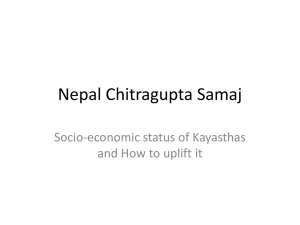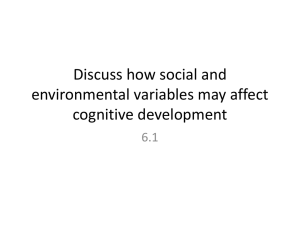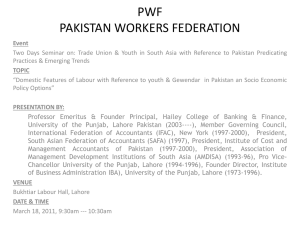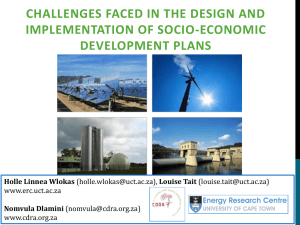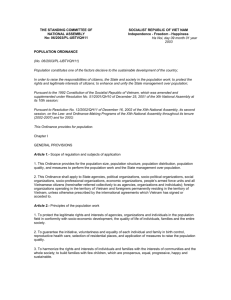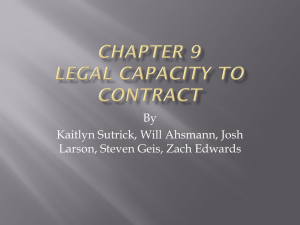Fair contractual provisions
advertisement
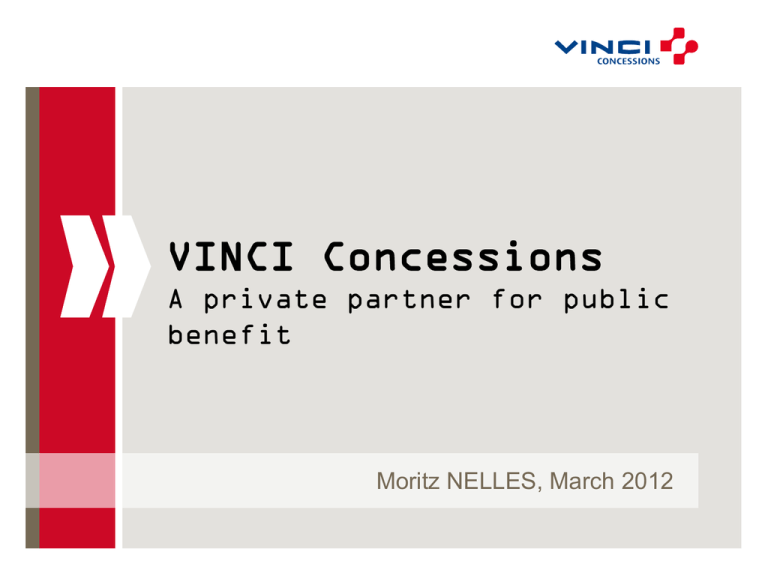
VINCI Concessions A private partner for public benefit Moritz NELLES, March 2012 Critical Success Factors of PPPs: What are the drawbacks to avoid and how to make PPP’s a success story? P3T3 Open Day Conference, Weimar 2012 Content 1. Defining success 2. Creating stakeholder value 3. Major stages in the procurement process 4. Fair contractual provisions 5. Conclusion 3 A success story for whom? What are the public authority’s objectives? Have well-functioning infrastructure Keep safe public finance Be re-elected What are users’ objectives? Use high quality infrastructure Not spend much money What are the private partner’s objectives? Conflicting objectives among project stakeholders Improve reputation and skills Make financial profits Real success converges the different stakeholder interests and maximises stakeholder value 4 How to deal with diverging objectives? The solution we have adopted is to seek for winwin-win arrangements, in order to make the diverging objectives converge. Several steps are incontrovertible: 1. Only projects with a high socio-economic utility 2. Major stages in the procurement process 3. Fair contractual provisions 5 The socio-economic utility (step 1) We only pursue projects which are desirable from the socio-economic point of view: - projects that correspond to real demand and needs How can this « socio-economic utility » be assessed? Not only financial aspects are taken into account But also indirect aspects that measure the effects for the society: in terms of accessibility, reliability, safety, time savings, environmental concerns, attractivity of the area The socio-economic Cost-Benefit Analysis enables to translate socio-economic aspects into monetary terms (which is different from classical feasibility studies) 6 The socio-economic utility (step 1) Pirandello ® is a global urban model bringing transportation models and urban models together [Piron] Using an analysis of the urban population based on income level and job category, Pirandello ® determines the logic of housing localisation by income level. Pirandello ® measures the global socioeconomic efficiency of projects or regulations. It can be used to test principles of urban planning, toll policies for zones or infrastructur e, and CO2 emissions. 7 The socio-economic utility (step 1) By experience, we know that a high socio-economic utility makes the payment of a toll by users / tax by taxpayers, more politically acceptable [Piron, 2004]. On the contrary, «White Elephants » low socioeconomic utility, leads to: A decrease in the credibility of the public sector Alteration of the private sector’s reputation Undue increase of the public debt At the end of the day, a high socio-economic utility confirms the link between sound infrastructure and growth for all parties and thereby forms the foundation for creating stakeholder value 8 Major stages in the procurement process (step 2) The goal of the award process: to make a competitive and credible bid emerge Decrease the level of uncertainty and balance information asymmetry: Advanced investigation and documentation by the procuring authority on the state of the existing infrastructure (asset & ground conditions, contamination and other constraints) Information asymmetry in favour of the authority creates contract inefficiency Hong & Shum [2002] Pric e Conservative bid: Risk allowances and contingencies too high Aggressive bid: Risk not priced renders the bid undeliverable: „The Winner‘s Curse“ Deliverability Major stages in the procurement process (step 2) To avoid most PPP drawbacks, and allow a win-winwin arrangement, 4 uncontrovertible stages in the award process: Market Sounding Initiative ensure the envisaged project scope, risk transfer and delivery structure is accepted by the industry Prequalification select operators with experience, technical skills related to the project and financial robustness Possibility of dialogue to clarify the objectives, avoid misunderstandings and to let innovative solutions emerge Weighted selection criteria including price, quality (organisation skills, sustainable development, innovation), performance and availability, respect of human and technical norms Fair contractual provisions (step 3) In all PPP contracts, some unavoidable contractual provisions need to reflect industry practice and must enable clear calculation mechanisms: Termination and compensation arrangements Transferability of investments Limitation of liability Common industry (project finance) practice needs/constrai nts to be reflected Minimise ambiguities and offer a clear mechanism for the calculation of commercial risk exposure for all parties (decision not transferred to an undefined time horizon) 11 Fair contractual provisions (step 3) However, contracts cannot be complete: No one can foresee all possible contingencies in such long-term contracts It is generally acknowledged by legal experts and institutions that contract amendment/renegotiations = zero-sum game opportunism In the end, fair contractual provisions allow a sound trade-off between: Enough rigidity the contract terms are enforced, the operator has incentives, the authority is credible, low uncertainty Enough flexibility the contract can adapt to evolving circumstances. In a cooperative way (no opportunism) if there is a probability of contract renewal. 12 Fair contractual provisions (step 3) VINCI Autoroutes environmental improvement programme ‘Paquet Vert Autoroutier’ Additional investment of ca €370 million as new environmental regulations & requirements were introduced Protecting water resources Preserving biodiversity Cutting CO2 emissions 13 Conclusion The private partner perspective alone cannot lead to any recommendations for successful PPPs. Only projects with a high socio-economic utility - Projects that correspond to real demand and needs. - Maximisation of stakeholder value Major stages in the procurement process - Market Sounding Initiative to ensure the project scope is accepted - Avoiding information asymmetry: all preliminary investigations of high risk project parts required - Multiple selection criteria aligned to Stakeholder Value Fair contractual provisions - Existing industry practice must be reflected - Minimise ambiguities and offer a clear calculation mechanisms - Trade off between rigidity and flexibility for long term deliverability Thank you for your attention
